
What is a Signal Generator?
A signal generator is an essential piece of equipment for testing electronics. It is used to produce multiple types of signals at different frequencies for a variety of purposes such as troubleshooting, and designing. While a standard signal generator is one that produces signals of varying amplitude and frequency, there are several different types available in the market today, that perform more specialized functions. In this article, we will focus on RF and Microwave Signal Generators.
Although a basic signal generator is still widely used to test electronics, it has evolved tremendously over the past century - with increased frequency range, excellent signal fidelity, and the ability to program specific functions with MATLAB and Python. Here’s a look at some of the most common types of signal generators and their applications.
Analog Signal Generators
An analog signal generator will produce a Carrier Wave or CW. Both the frequency and amplitude are adjustable. Frequency ranges can often be between the low kHz and extend beyond the mm-wave spectrum. Specific applications require different frequency ranges, for example, cellular systems will mostly use frequencies up to 6GHz, although this increases yearly as new spectrum becomes available, with 5G using frequencies greater than 28GHz, and 5G-Advanced utilizing frequencies up to 25GHz. Airborne Radar is often at 10GHz and high-resolution Automotive Radar at 77GHz.
The method for creating different frequencies is called synthesis, with the two major types being Direct and Indirect. Both start with a reference frequency, a direct synthesizer will use multipliers and mixers to derive the desired frequency, while an indirect synthesizer will use a voltage-controlled oscillator and a phase Locked Loop (PLL) to compare the desired frequency to the reference. Many signal generators use a combination of synthesis methods to create a broad frequency range. For example, the Tabor Lucid Analog Signal Generator will use Direct Digital synthesis (DDS) for low frequencies, a VCO/PLL for RF, and frequency doublers for Microwave frequencies.
To learn more about choosing the correct analog signal generator visit our RF-Signal-Generator-Resource-Center.
Modular Signal Generators - The Lucid Signal Generator
Tabor has continued to innovate in signal generator technology. The Lucid family of signal generators is based on a modular concept. The desktop unit is the core module, USB, and SPI controlled for Desktop or embedded applications, and when deployed in a benchtop, rack, or portable package provides muti-channel solutions for driving mixers, testing ADC's, and testing RF chamber leakage.
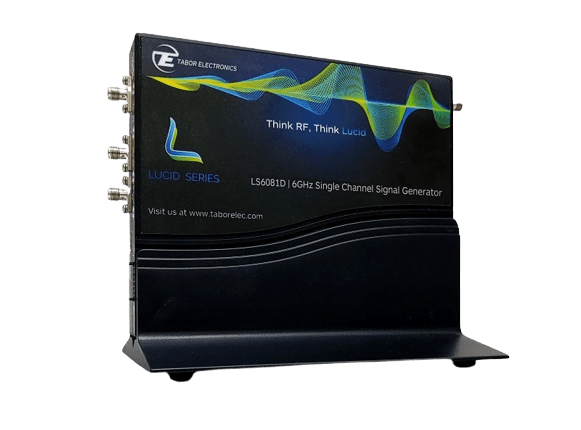
|
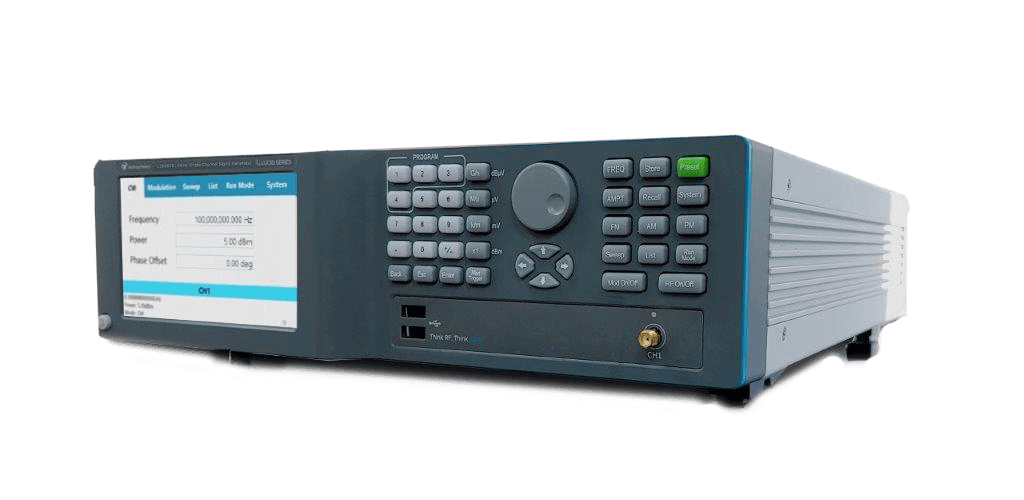
|
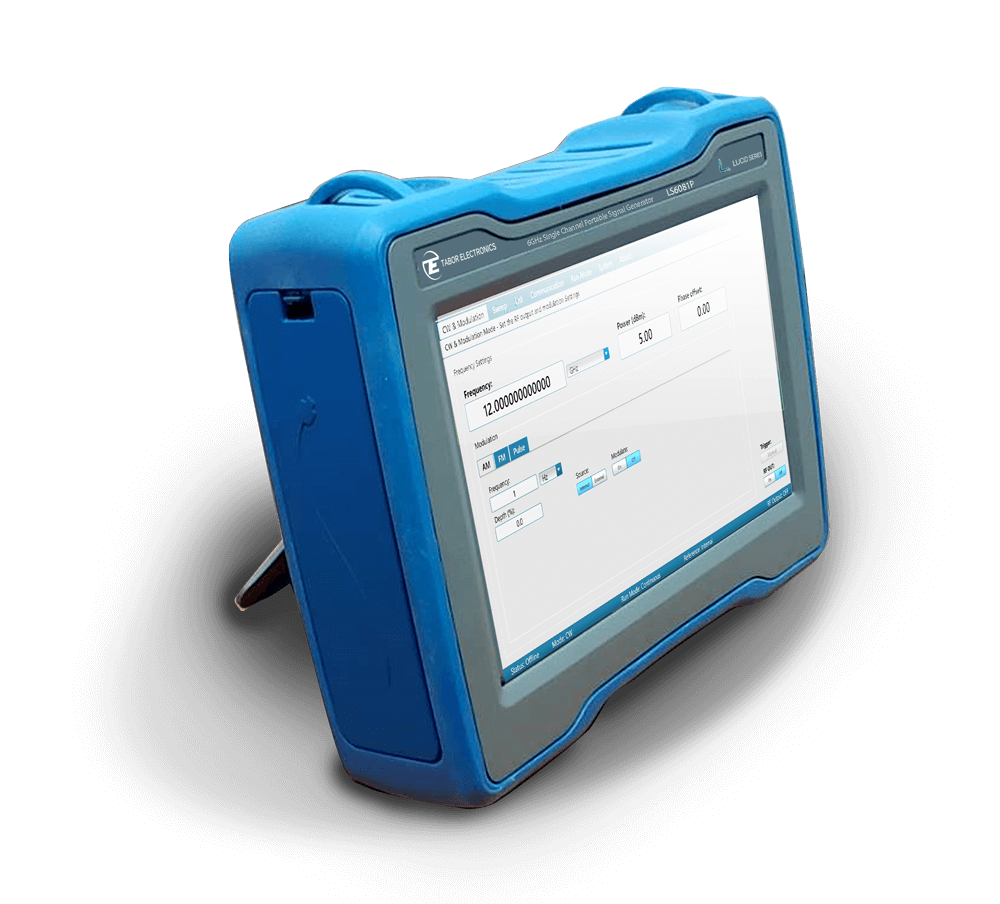
|
Lucid Desktop Module
USB/SPI controlled
|
Lucid Benchtop
1. 2, 4 Channel options
|
Lucid Portable
Field Rugged, Waterproof
|

Vector Signal Generators
A vector signal generator is an evolution of an analog signal generator and incorporates a Quadrature Mixer to modulate Real and Imaginary Signal Vectors onto a carrier for transmission at the desired RF Frequency. The Local Oscillator (LO) uses the same synthesis techniques as the analog signal generator, which is a major use case of analog signal generators. There are two modulation methods, analog and digital. An analog modulator often requires calibration to ensure the IQ is balanced and the Carrier Feedthrough is minimized. While, a digital modulator takes advantage of high-speed RF DAC technology, which contains a digital implementation of both the IQ modulator and LO.
Modular Vector Signal Generation - The Tabor Proteus Family
A Tabor Proteus Arbitrary Waveform Generator uses RF DAC technology to produce IQ-modulated signals, with bandwidths up to 4GHz this type of solution is ideal for engineers and researchers who require wideband signal emulation. It is based on the industry standard PXIe modular platform. It can be used in a high-density PXIe chassis such as the Tabor Model PXE21100 21 Slot PXIe Based Chassis with Embedded Controller or the benchtop form factor with a screen, or without the screen in the desktop model.
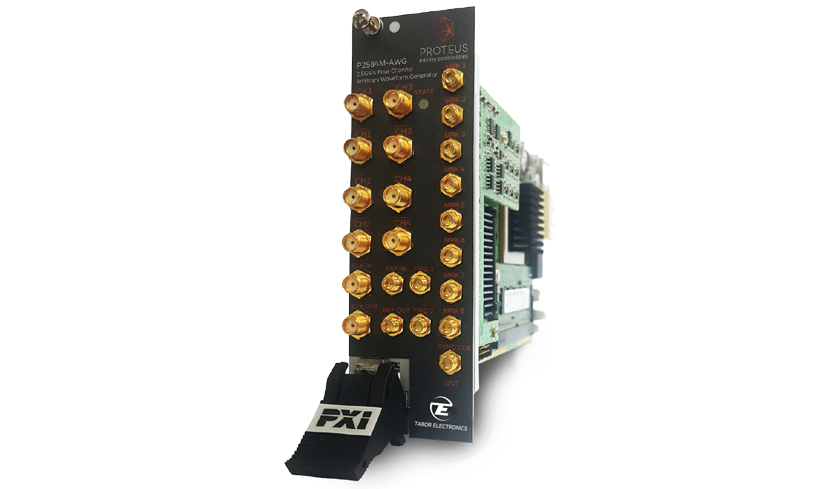 |
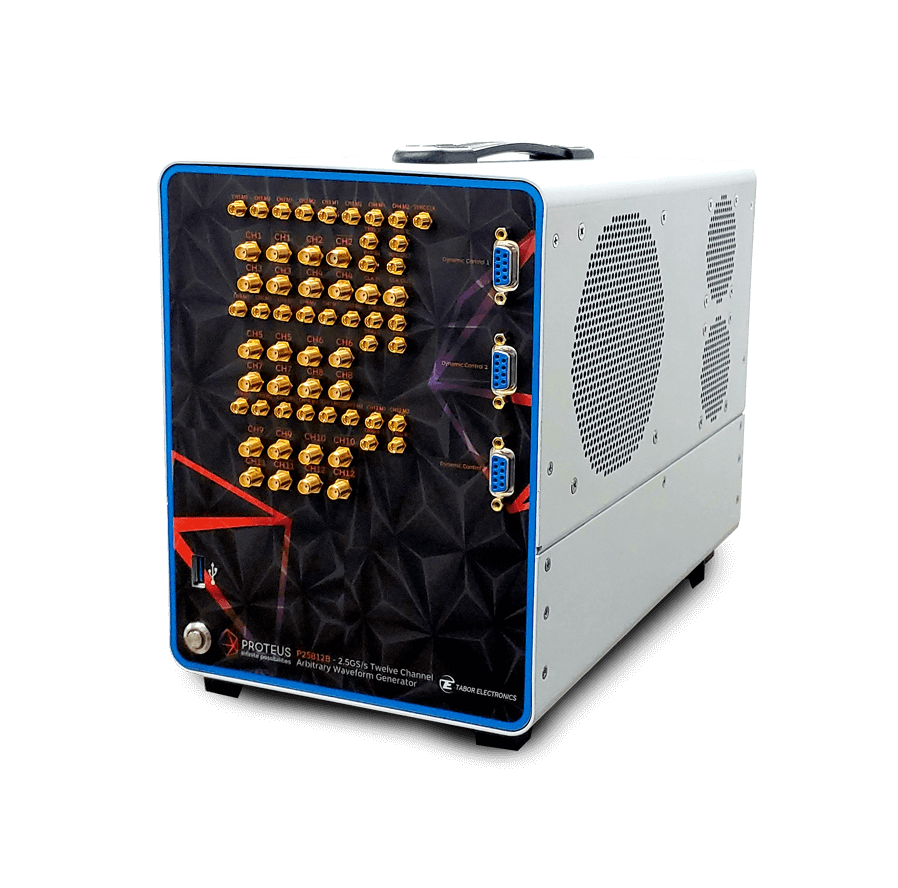 |
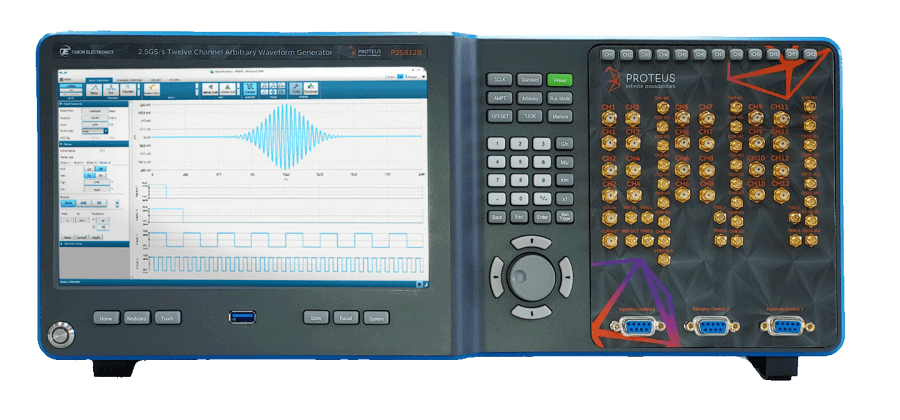 |
Proteus PXIe Module
|
Proteus Desktop
|
Porteus Benchtop
|

Function Generator
For non-RF applications, a function generator is the most common type of signal generator. It generates simple repetitive waveforms of varying magnitudes and frequencies. It uses a signal generator circuit and an electronic oscillator to generate signals, which act as stimuli for testing and designing purposes. A good example of its application is troubleshooting a PCB.
In some signal generators, there is a function for modulation that enables users to change the magnitude andwave form. Others have digital signal processors, synthesizers, and digital-to-analog converters (DAC) for improved ability.
Special Purpose Signal Generators
These types have very specific, limited applications. Unlike the general-purpose signal generators listed above, these mostly carry out a single function with a lot of support for variation in frequency, amplitude, delays, and shapes.
Pulse Generators
Also known as logic pulse generators, they produce pulses of varying frequencies and amplitudes. They are majorly used for testing and troubleshooting purposes where they act as stimuli for circuits and other electronic appliances. Pulse generators are rare because most other generators today are capable of producing pulses. Buying a sole pulse generator is not economical.
Video Signal Generators
Similar to an audio generator, a video signal generator produces videographic waveforms. It is used primarily for testing purposes and is employed in the testing of televisions, video games, and video-based products (films).
Both composite and monochrome signals can be generated, which again classifies them into two types. In some video signal generators, there is an additional capacity to generate audio signals.
Digital Pattern Generators
Tailored for use to test digital circuits, they produce ‘digital electronics stimuli’ which is an electrical waveform similar to a sine wave. The similarity is associated with its ability to create two states i.e., high state and low state. It replicates the function of a voltage signal (with the highs and lows) and acts as a stimulus for testing and troubleshooting.
Digital pattern generators are capable of producing voltage levels that are compatible with a variety of digital I/O systems such as TTL, LVDS, and LVCMOS.
They are often confused with pulse generators. In reality, their difference is in their features and abilities. Digital pattern generators are available as both standalone and add-on units and are widely used in DAC stimulation, embedded system debugging, and DPS hardware stimulation.
Other
All the types described above are hardware-based. Yet there are software-based signal generators that are used to produce arbitrary waveforms via PC based output devices. For example in the audio industry stimuli can be created and transfered via a sound card. This card is then connected to a desired testing or input device. You could even create some analog tones and use them in your latest EDM mix.
Conclusion
A signal generator is an integral part of the electronics testing and designing process. Without them, it would be difficult to create new technology. There are many different types of instruments classified as a signal generator, so learning the difference is key to helping you get the best product for your application needs.
Learn how to select the right signal generator for you and get tips, tricks, and methods for making RF measurements with the accuracy and precision your application demands, visit our RF-Signal-Generator-Resource-Center.

References –